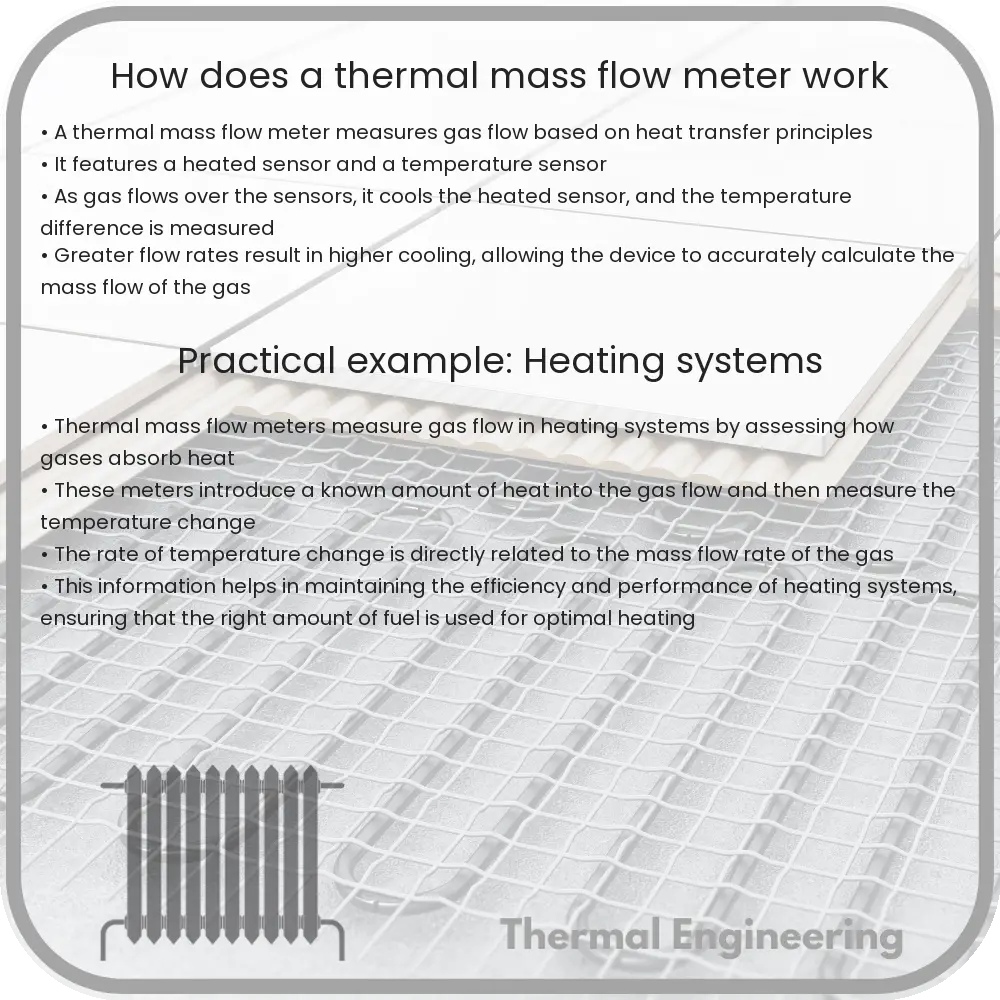Learn the functions and principles of thermal mass flow meters used for precise gas flow measurements in various industrial applications.

Understanding Thermal Mass Flow Meters
Thermal mass flow meters are devices used in various industries to measure the flow rate of gases. Unlike other flow measurement technologies, thermal mass flow meters measure the mass flow rate directly, without needing separate temperature or pressure measurements. This article will explain how these devices operate and their applications.
Working Principle
The principle behind thermal mass flow meters is relatively simple and revolves around heat transfer. Essentially, the flow meter introduces a known amount of heat into the flowing stream and measures how this heat is dissipated by the flow of the gas. This measurement allows the meter to calculate the mass flow rate of the gas.
There are two common designs of thermal mass flow meters:
- Constant Temperature Anemometers: These meters maintain a constant temperature difference between two sensors. The electrical power needed to maintain the temperature difference is measured. As the flow increases, more power is needed to maintain the constant temperature which directly relates to the mass flow rate of the gas.
- Constant Current Anemometers: This design maintains a constant current or heat input to one sensor. The temperature difference between this heated sensor and a reference sensor is measured. The higher the flow rate, the more cooling occurs on the heated sensor, and the greater the temperature difference between the two sensors. This difference can then be related back to the gas flow rate.
Key Components
Typically, a thermal mass flow meter consists of the following main components:
- Flow Body: The physical chamber or pipe through which the gas flows.
- Sensors: Usually two sensors are used; one is heated (flow sensor) and the other serves as a reference.
- Heating Element: Used to heat the flow sensor.
- Electronic Circuitry: Processes the signals from the sensors and converts them into output that reflects the flow rate.
Equations and Measurement
At the heart of the thermal mass flow meter’s measurement technique is the heat transfer equation, given by:
q = mcΔT
Where:
- q is the heat added to the sensor,
- m is the mass flow rate of the gas,
- c is the specific heat capacity of the gas, and
- ΔT is the change in temperature between the heated and reference sensors.
By controlling either q (in constant current meters) or ΔT (in constant temperature meters) and measuring the other variables, the mass flow rate, m, can be accurately determined.
Applications and Advantages
Thermal mass flow meters are widely used in industries such as chemical processing, pharmaceuticals, biotechnology, and environmental monitoring. Their ability to measure low flow rates and their direct mass flow measurement capability make them particularly useful where precise regulation of gas flow is critical. Advantages include:
- Direct measurement of mass flow without needing for additional temperature and pressure compensation.
- High accuracy and repeatability.
- Low maintenance and no moving parts, leading to less wear and tear.
Understanding thermal mass flow meters provides valuable insights into their critical role in modern industrial applications, highlighting the importance of accurate flow measurements in maintaining process efficiency and safety.